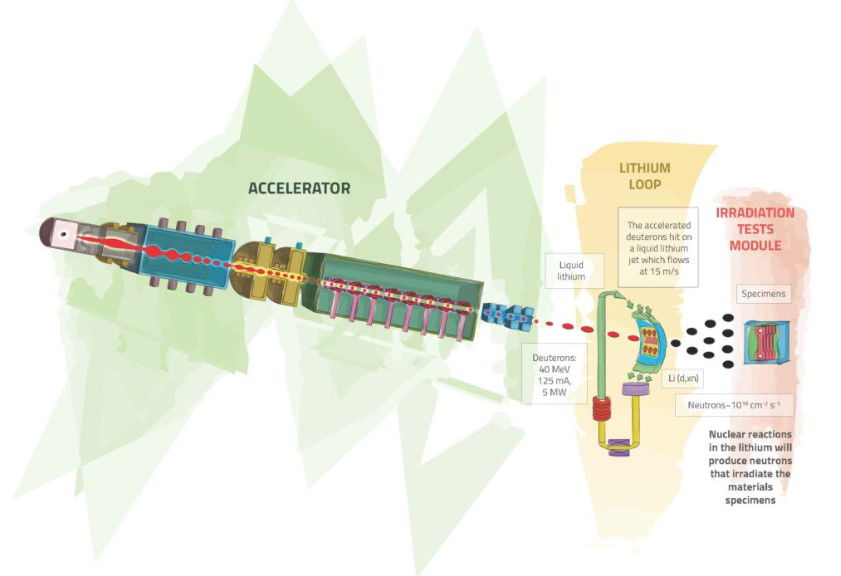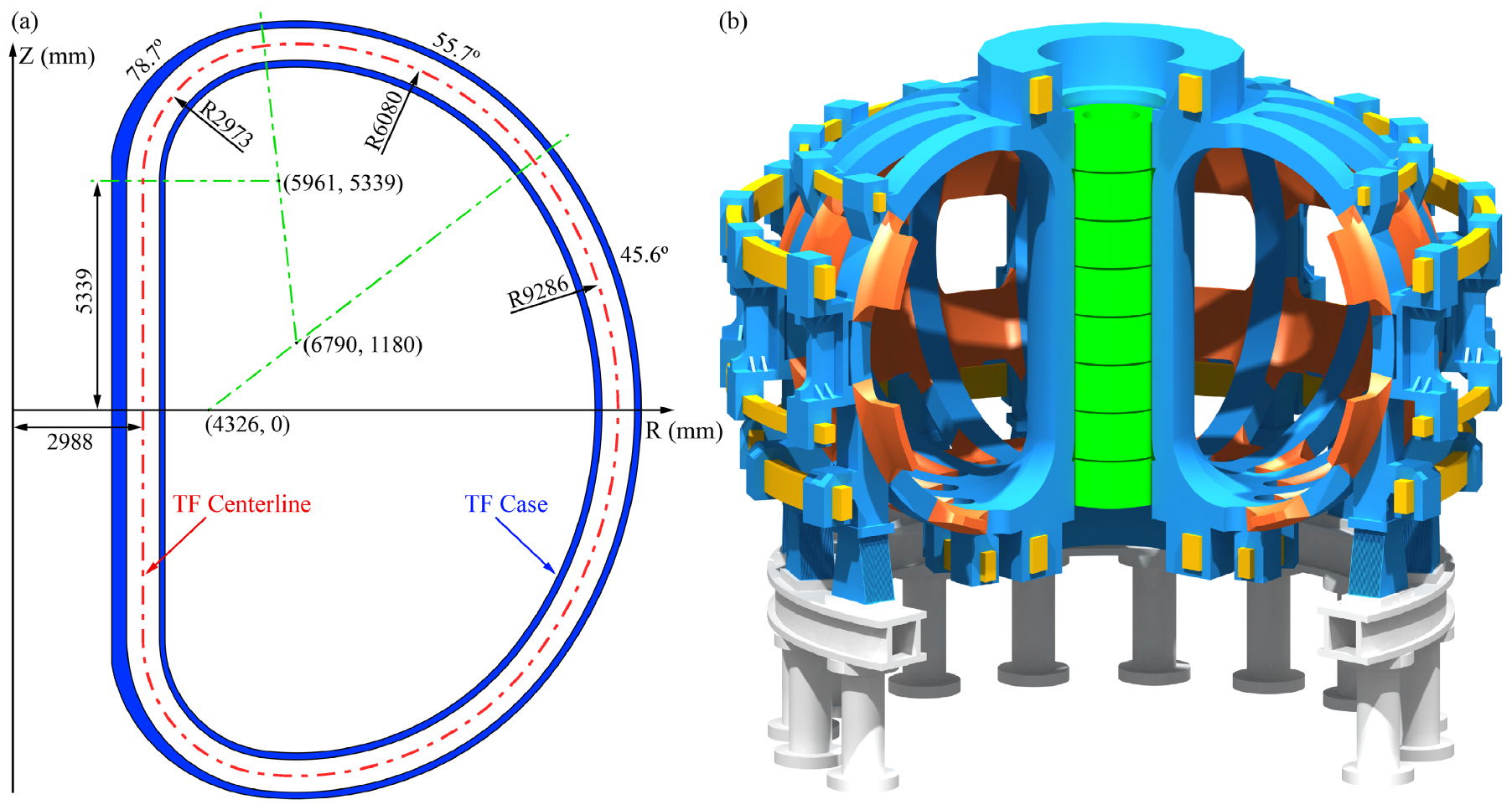Essential Test Facilities

Two critical facets of the development of fusion power, materials and tritium breeding, require dedicated test facilities. For materials, radiation damage means that with available metal alloys some of the inner tokamak components must be regularly replaced. These replacement operations require complicated remote handling machines and a great deal of downtime for the reactor, greatly adding to the cost of fusion electricity. Tritium breeding is absolutely essential as described in the page Lack of tritium fuel supplies for fusion reactors, but no testing of prototype modules is yet possible.
Two different types of devices have been considered to satisfy these needs and are described below.
- particle accelerators
- dedicated fusion reactors
Particle accelerator neutron sources
Neutron sources, based on particle accelerator technology, could be the fastest way to make useful test facilities.
IFMIF/EVEDA
The International Fusion Materials Irradiation Facility (IFMIF) is part of the Broader Approach agreement between Japan and Europe and planned to be built in Japan. It is discussed in a 2012 entry in the ITER Newline: Common controls in ITER and IFMIF.
The paper, Overview of the IFMIF/EVEDA project motivates and explains the project in detail. It is a neutron source intended as a test facility to develop new advanced materials for the plasma-facing components of fusion reactors. The device is based on a linear accelerator to generate neutron fluxes in the order of 1018m-2s-1 with an energy of 14 MeV as in a fusion reactor. The machine will accelerate deuterium ions and send them onto a lithium target to produce the neutron flux.

Principles of IFMIF: deuteron accelerator and lithium target to produce neutrons

Layout of IFMIF device
The facility will be constructed in Japan. At the present time, only prototype devices for IFMIF are actually in construction and the timescale for the full IFMIF device is unclear.
IFMIF-DONES
Following an agreement in 2021, another particle accelerator test facility for fusion, IFMIF-DONES, has been launched to be built in Spain. The facility will produce a 125 mA deuteron beam, accelerated up to 40 MeV and shaped to have a nominal cross section in the range from 100 mm x 50 mm to 200 mm x 50 mm, impinging on a liquid lithium target 25 mm thick cross‐flowing at about 15 m/s in front of it. The stripping reactions generate a large number of neutrons that interact with the materials samples located immediately behind the Lithium Target, in the Test Modules.

IFMIF-DONES functioning scheme
Fusion engineering test reactor facilities
Numerous fusion devices have been proposed with the principal objective to be engineering test facilities over the past few decades. For ITER, the engineering test aspect, has been much reduced and many people now see it as mainly a fusion plasma research platform, its contribution beyond this will be limited.
In the USA the need for fusion device to act as an engineering test facility was propose many decades ago in 1980s, it has carried the name, Fusion Nuclear Science Facility (FNSF) and has been through many studies confirming the requirements. In the US there has been recent interest in Spherical Tokamaks to fulfil this role, e. g. Menard et al., it is not obvious funding will be available for such a facility in the USA.
In China such a test facility does have funding, China Fusion Engineering Test Reactor (CFETR) and so seems likely to happen. With a tokamak radius of 7.2 metres, it will be bigger than ITER.

The China Fusion Engineering Test Reactor
Schedules
The completion schedules for all these test facilities are very unclear. As has been emphasized they are essential to qualify material and test breeder modules for fusion reactors. The page Timescales advertised for Commercial Fusion Power Plant indicates the essential role of the test facilities in the overall schedule towards the completion of commercial fusion power plants.